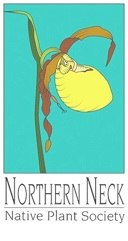Plant of the Month April 2025: Wild Strawberry
Did you know we have a wonderful native Wild Strawberry, also known as Scarlet or Virginia Strawberry? It is an adaptable low, herbaceous perennial that spreads by runners to form handsome, ground-covering semi-evergreen colonies. This diminutive strawberry rarely grows above 6” high but can spread indefinitely as runners (technically stolons) root as they trail along the ground. Wild strawberry flaunts clusters of five-petaled white flowers from late March through May, followed by small edible fruit. Although the fruit are only ½” wide or less, they pack a powerfully sweet taste. This species is one of two that were hybridized to create our garden or commercial strawberry. Wild Strawberry contributed its exceptionally sweet taste while the South American species contributed larger size. The fruit of the Wild Strawberry is often touted as being much sweeter than that of commercial hybrids we all love.
Wild Strawberry occurs across much of the United States and southern Canada and is common in every county in Virginia, growing in both moist to dry upland forests, old fields, meadows and along roadsides and other open, disturbed sites. As you might guess, this common little groundcover is quite adaptable and not picky about soils, growing in full sun to part shade in well drained moist or dry soils. It prefers organically rich, sandy loams but tolerates poor soils. Although Wild Strawberry is susceptible to a variety of pests such as aphids, mites, leaf spotting or fruit rot, it is typically vigorous and trouble-free and resists drought, erosion, and even deer. Some advise to protect it from strong winds, but I find it thrives in even my most exposed windy sites. Plants root readily and are easy to divide to increase plantings or share with friends.
The abundant clusters of small white flowers open by early April and continue to bloom through spring. Five crystalline white petals surround a central boss of yellow stamens and anthers and are followed by the small extraordinarily sweet fruit that ripen in late spring and early summer. Plant growth may slow in the hottest part of the summer and then revive as cooler temperatures set in. Fruit production can sometimes be dependent on environmental conditions and is most prolific while temperatures remain cool. Like the familiar garden strawberries, wild strawberries have runners that trail along the ground, rooting at each leaf node creating a dense groundcover. In our mild coastal winters, the Wild Strawberries are often evergreen. In fall the foliage takes on handsome scarlet tints that persist through the winter adding welcome color to the fall-winter landscape.
This wild strawberry is one of my favorite groundcovers and graces many areas of my garden. I grow it as a semi-evergreen groundcover in some of the driest, shadiest spots where other plants have failed to thrive and it provides a rich green, weed-smothering carpet, although flowering is reduced in shade. One of my favorite ways to grow this versatile plant is as a low groundcover layer in meadows or large borders where its vigorous running habit quickly forms a dense carpet beneath taller perennials and shrubs, crowding out weeds while providing interest through the seasons with early spring flowers, edible fruit, and scarlet fall-winter color. It can also be naturalized along woodland edges and makes an excellent bank cover to prevent erosion. And, of course, it is perfect for an edible, pollinator or a children’s garden. It can even be grown in containers or hanging baskets.
Wild Strawberry is considered a keystone flowering plant for our region because it supports an amazing amount of wildlife. The spring flowers attract a variety of pollinators and support specialist bees. Over 70 species of butterfly and moth caterpillars use Wild Strawberry as a host. Songbirds and small mammals also relish the sweet fruit. In fact, you may have to compete with all of the wildlife to get a taste of the sweet fruit! Both the fruit and leaves are high in vitamin C which Native Americans and early colonists used to treat many conditions including sunburn, dysentery, scurvy and gout. Both fresh and dried leaves have also been used as a therapeutic tea.
As is only fitting with this adaptable and oh-so useful Wild Strawberry, we will be selling seedlings at the Strawberry Festival in Heathsville on May 24th and will also have plenty on hand at our Annual Fall Plant Sale Sept. 5 – 7. You will surely want to add this beautiful little plant to your own garden and fill it with sweetness and life!
Photos:
1 The showy early spring flowers bloom through spring (Betsy Washington)
2 Eastern-tailed Blue butterfly attracted to the nectar (Betsy Washington)
3 Small fruits are amazingly sweet (from Inspring on i-Nat)
4 Wild Strawberry spreads by runners to make an excellent, dense groundcover (Betsy Washington




